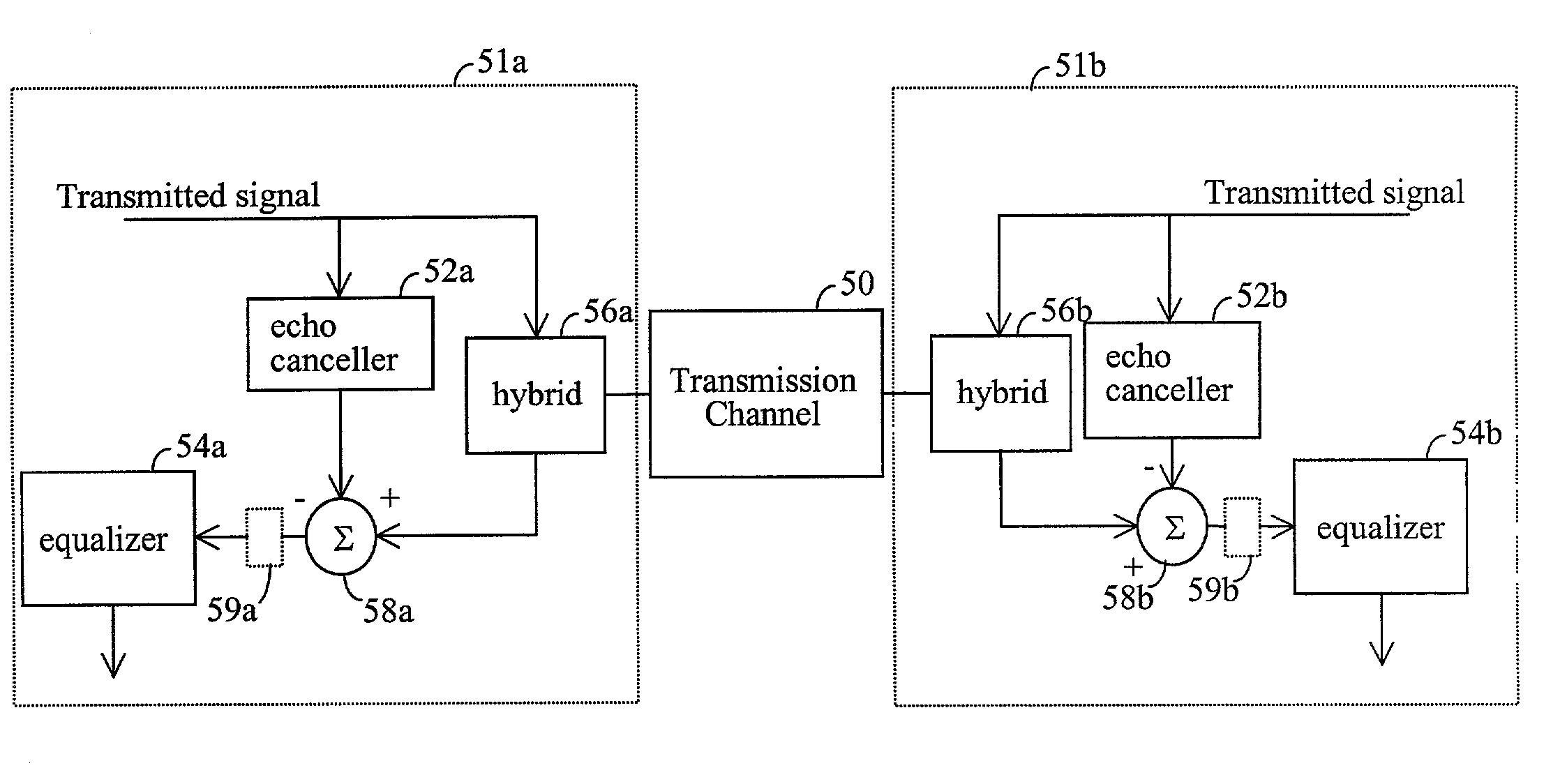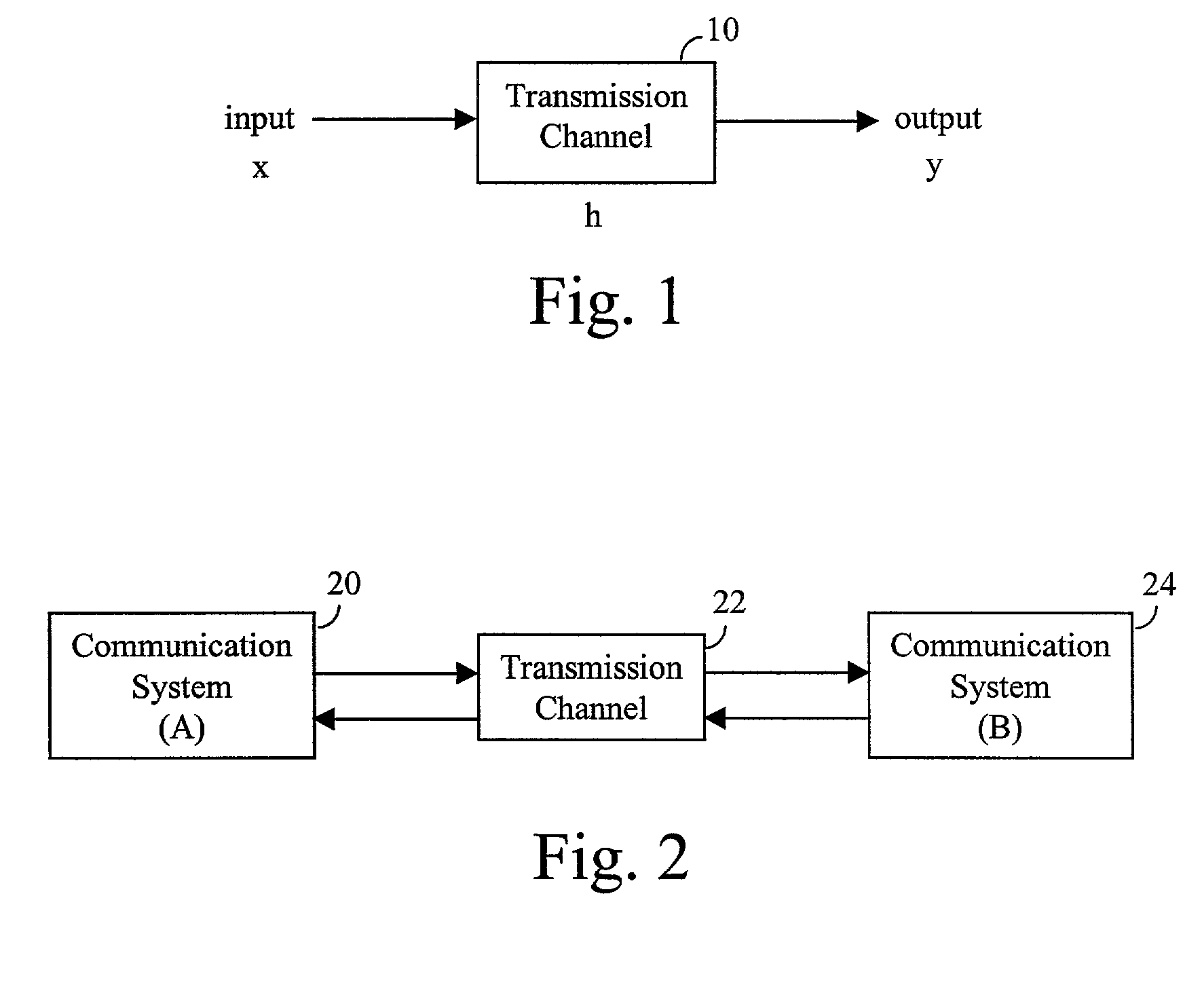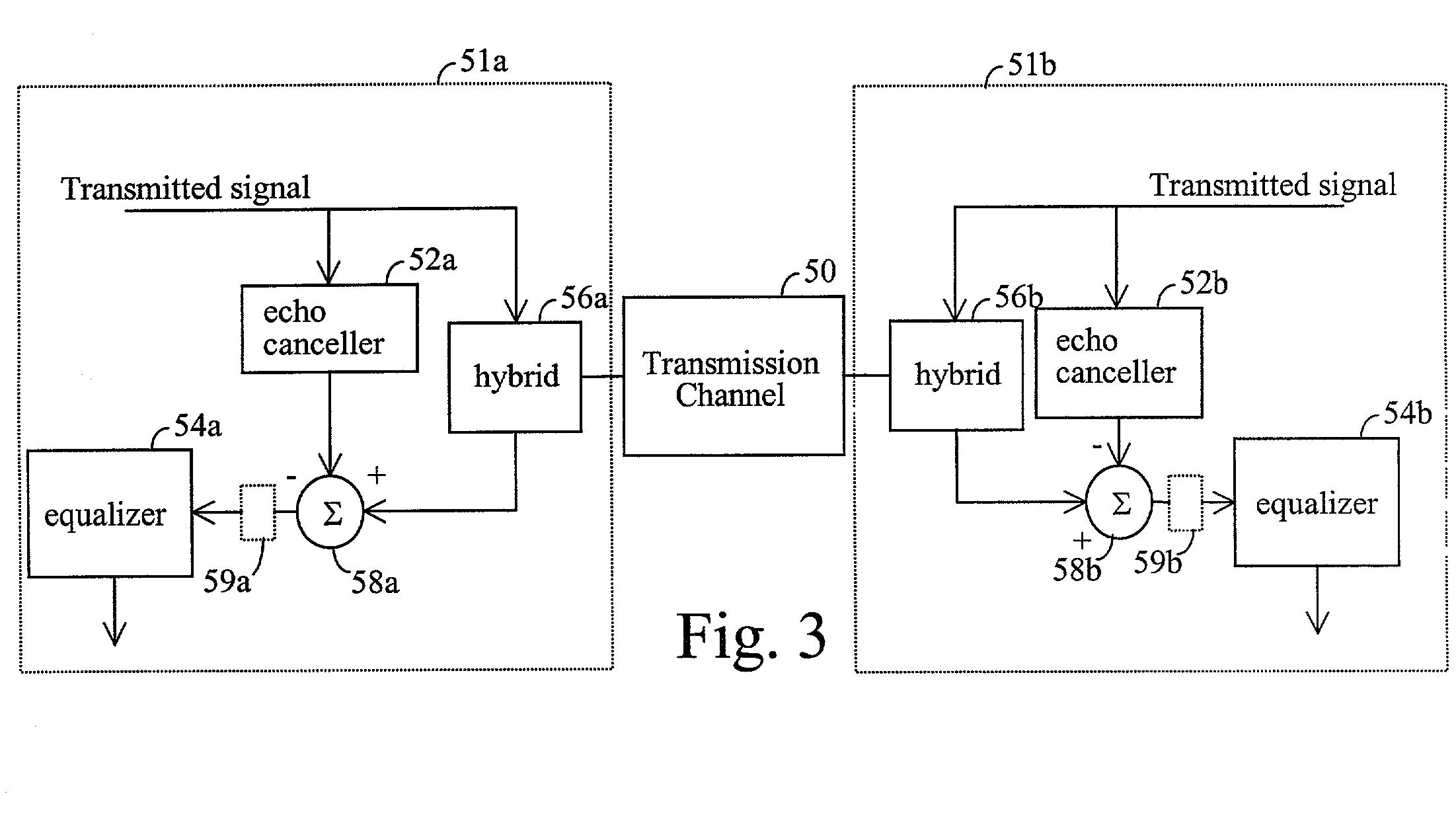Rapid identification of transmission media channel characteristics
a transmission media and characteristic identification technology, applied in the field of noise reduction and interference, can solve the problems of degrade the performance of the communication system, delay in data transmission, and delay in echo
- Summary
- Abstract
- Description
- Claims
- Application Information
AI Technical Summary
Benefits of technology
Problems solved by technology
Method used
Image
Examples
Embodiment Construction
[0026] Communications networks, systems, and services can be composed of a variety of components having different electrical and physical characteristics. For example, customer in-premises and business telephone wiring can vary, as can the distance between telephone jacks. Connections can vary in a variety of ways and topologies. Configurations of such wiring and other communications network, system, or service components can impose severe signal degradation.
[0027] Performance degradation also can result from reflection and echo of signals, resulting from telephone jacks and other components that are not terminated properly (e.g., not impedance matched). This may produce frequency notches that fall in the operating frequency band. The locations of these notches may vary and are directly related to the distance between the communications devices and the jack, the impedance characteristics of these devices, other components of the communications system, and the transmission media. To ...
PUM
 Login to View More
Login to View More Abstract
Description
Claims
Application Information
 Login to View More
Login to View More - R&D
- Intellectual Property
- Life Sciences
- Materials
- Tech Scout
- Unparalleled Data Quality
- Higher Quality Content
- 60% Fewer Hallucinations
Browse by: Latest US Patents, China's latest patents, Technical Efficacy Thesaurus, Application Domain, Technology Topic, Popular Technical Reports.
© 2025 PatSnap. All rights reserved.Legal|Privacy policy|Modern Slavery Act Transparency Statement|Sitemap|About US| Contact US: help@patsnap.com



